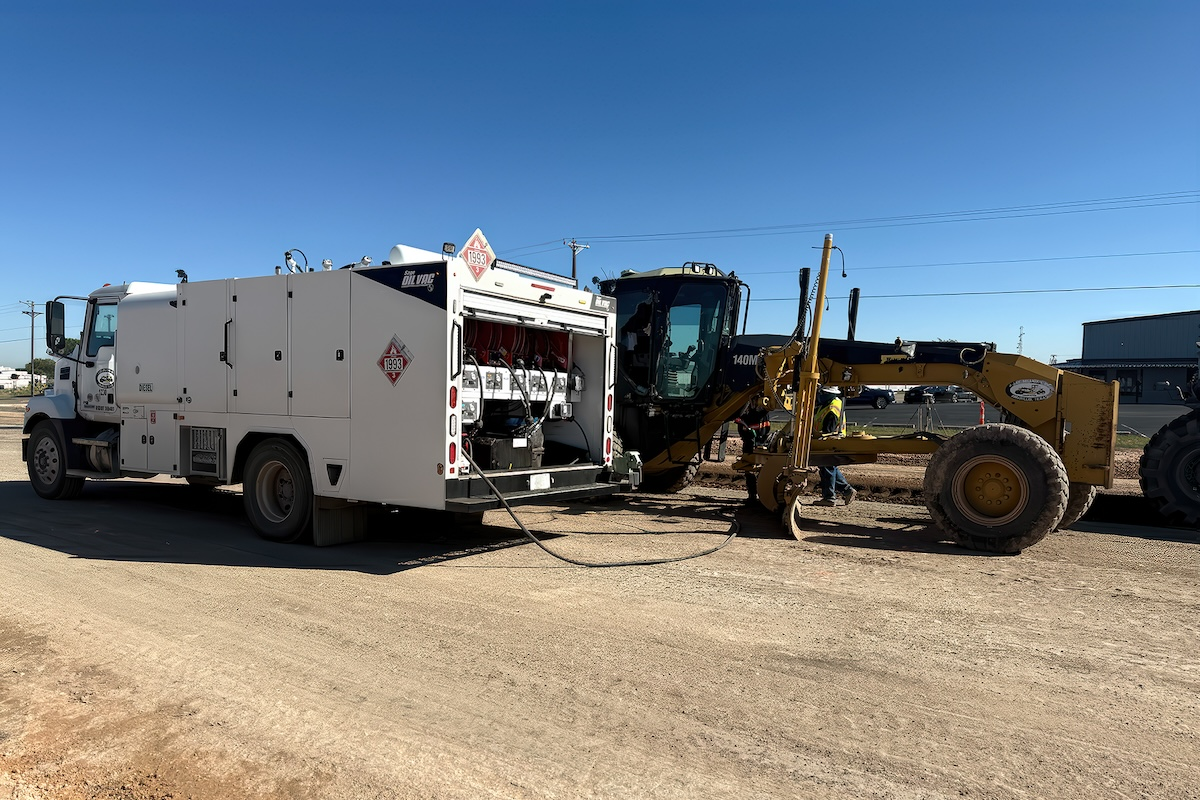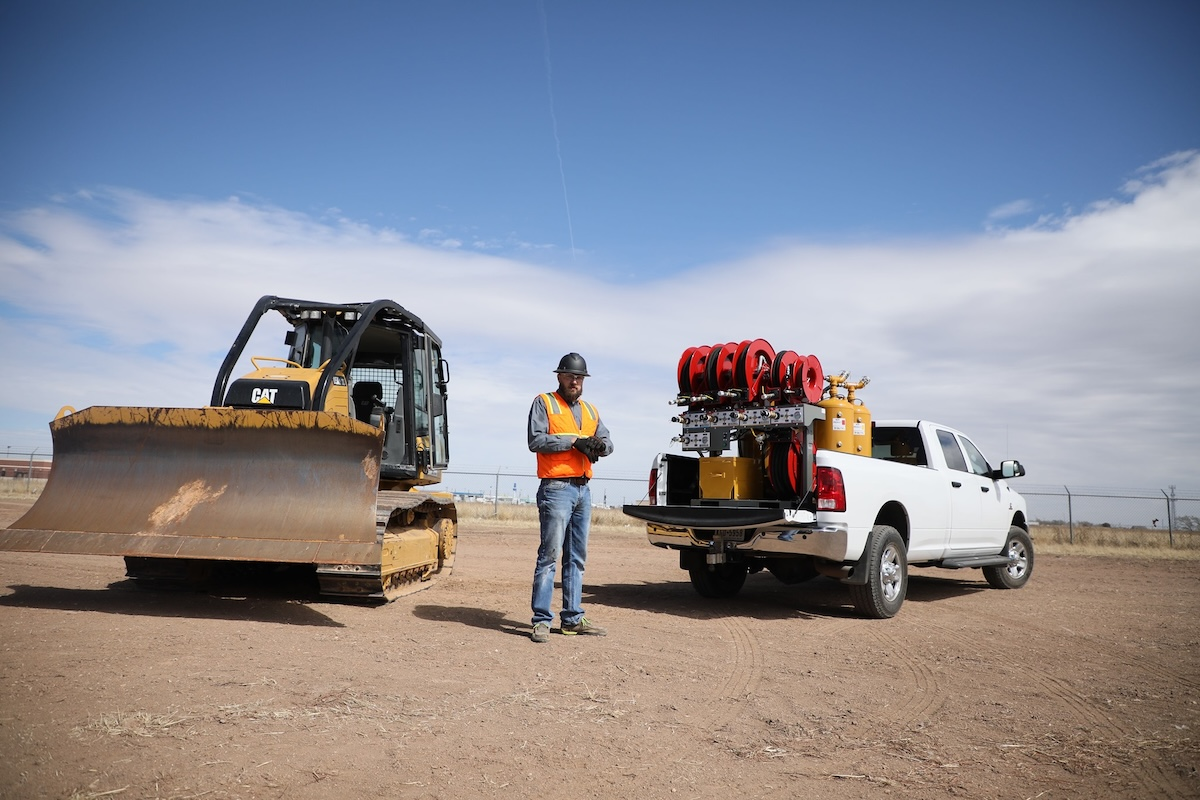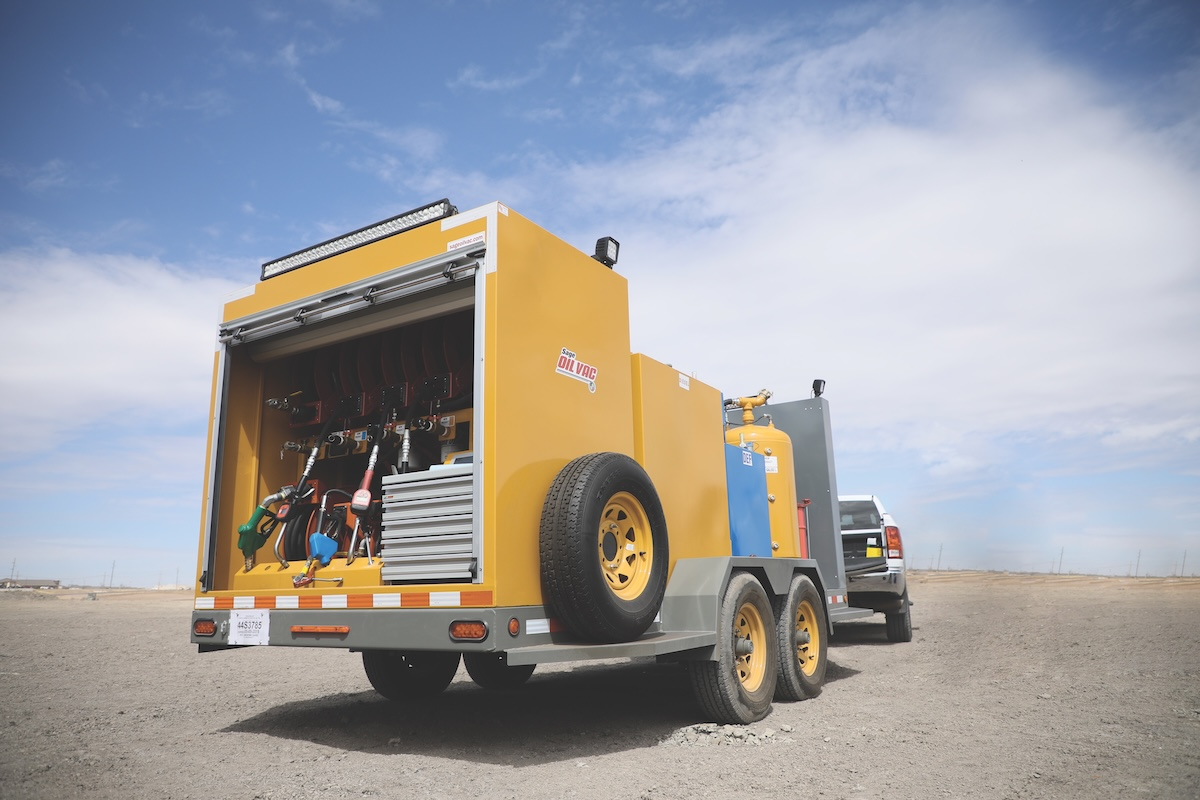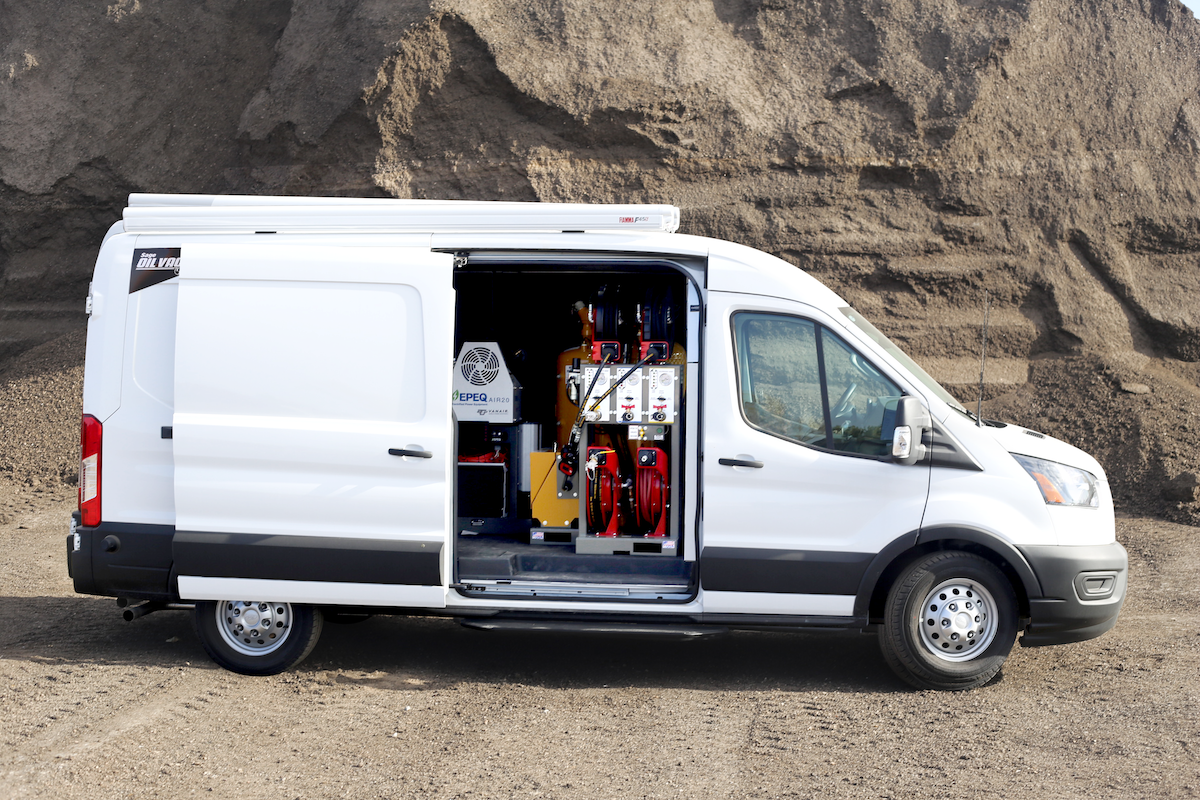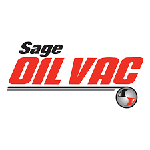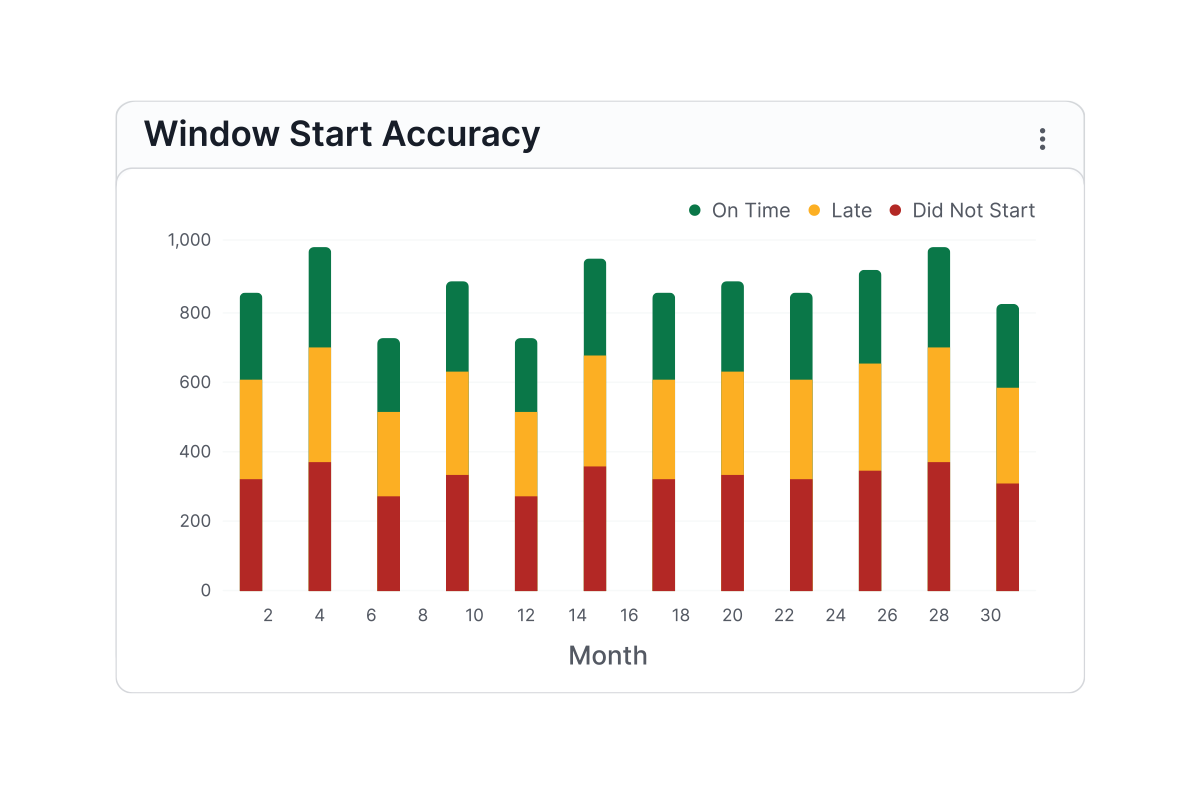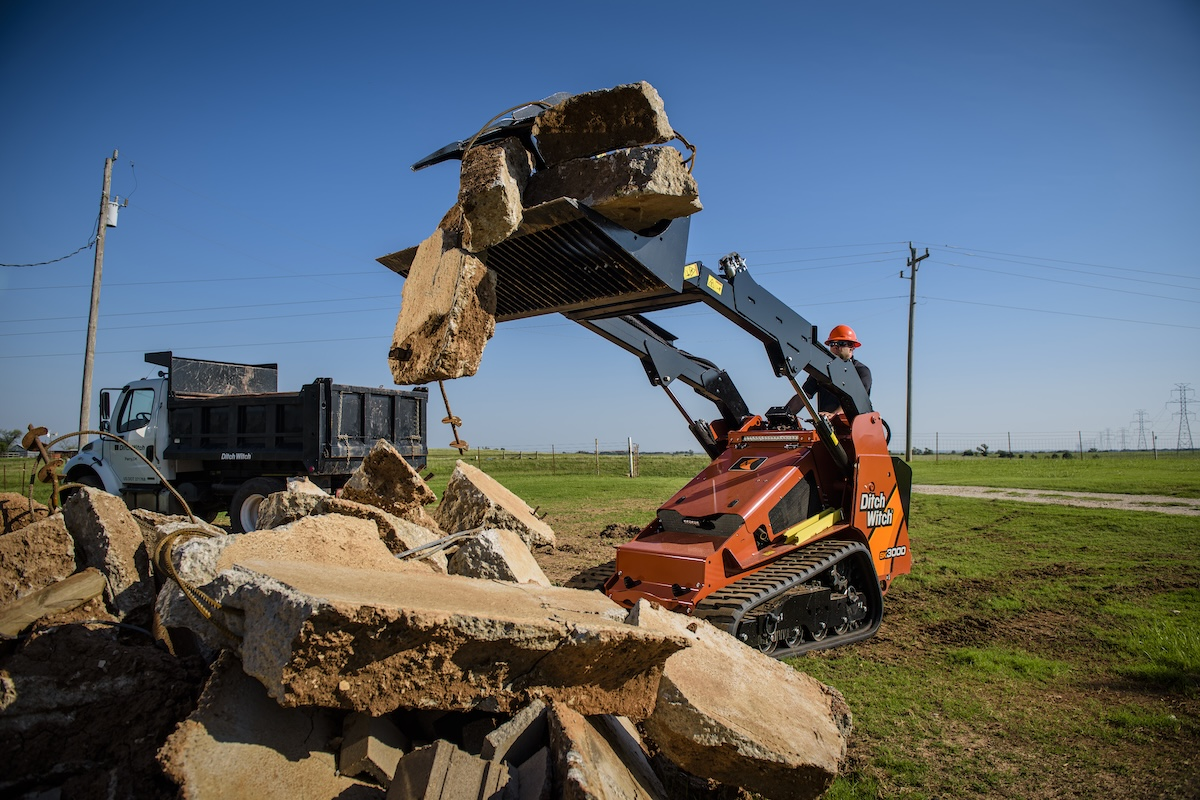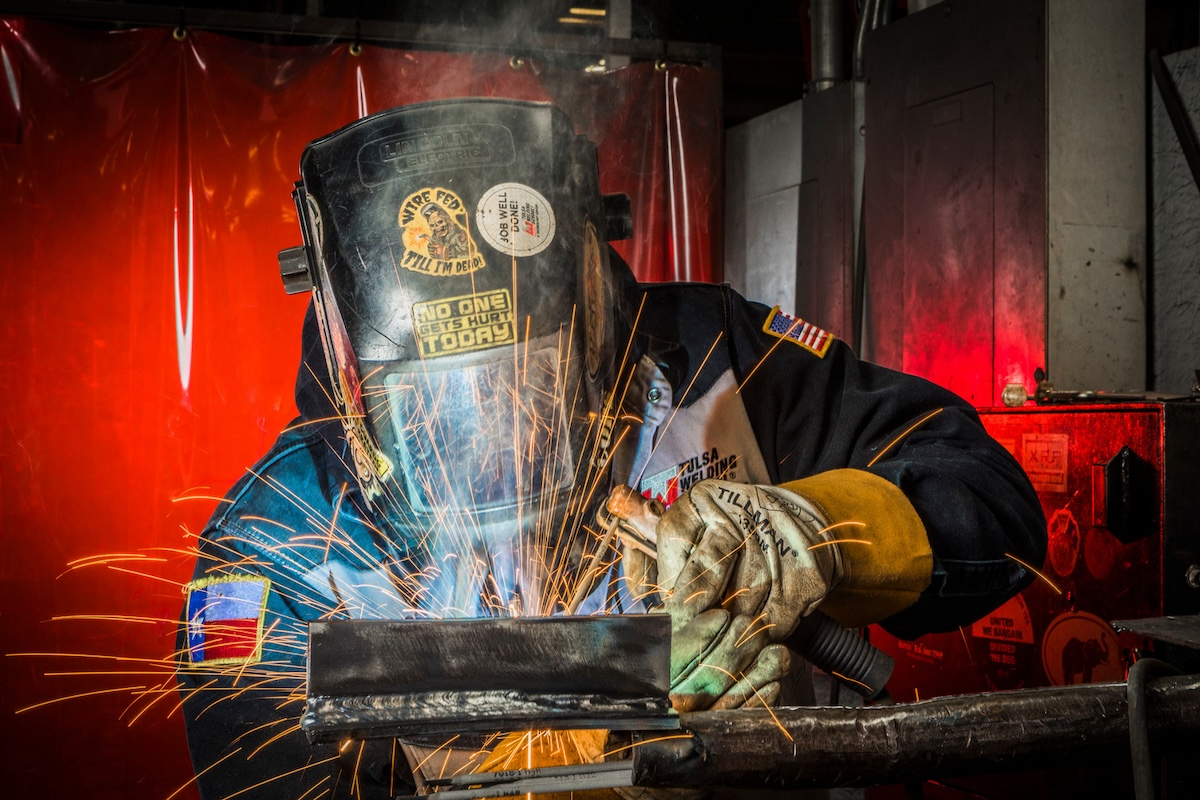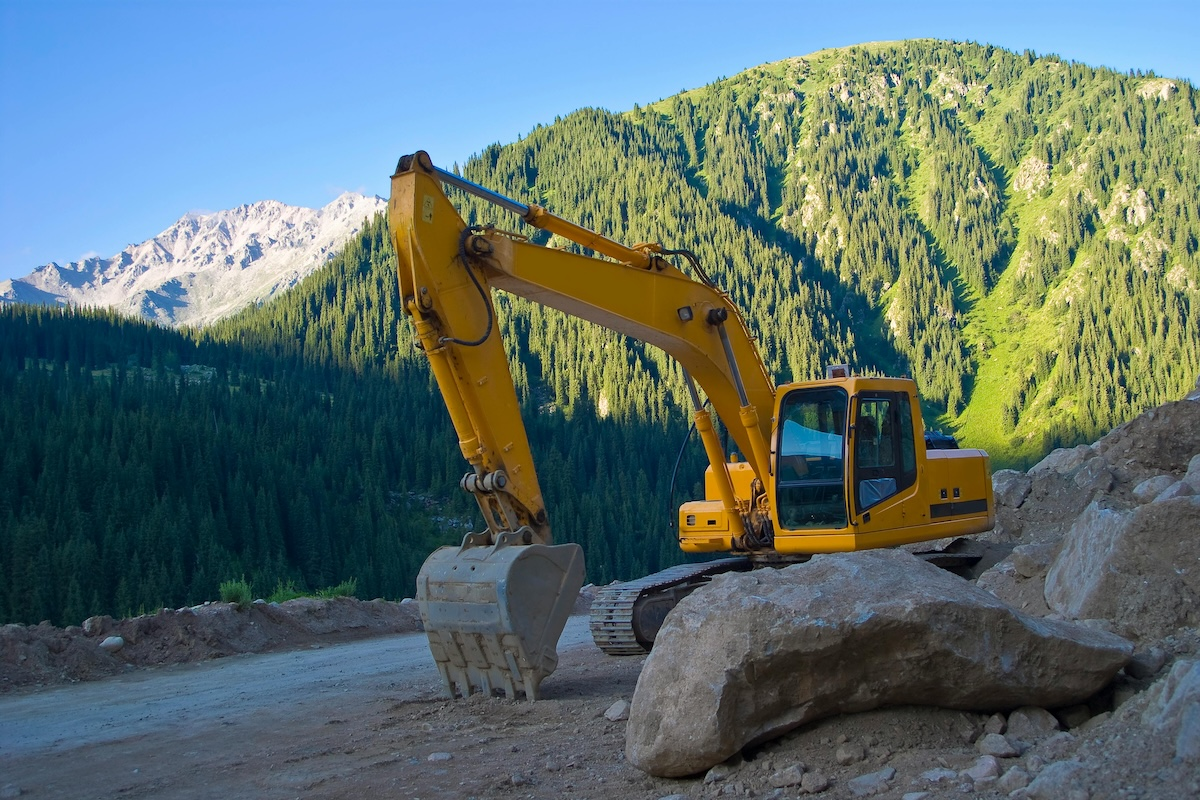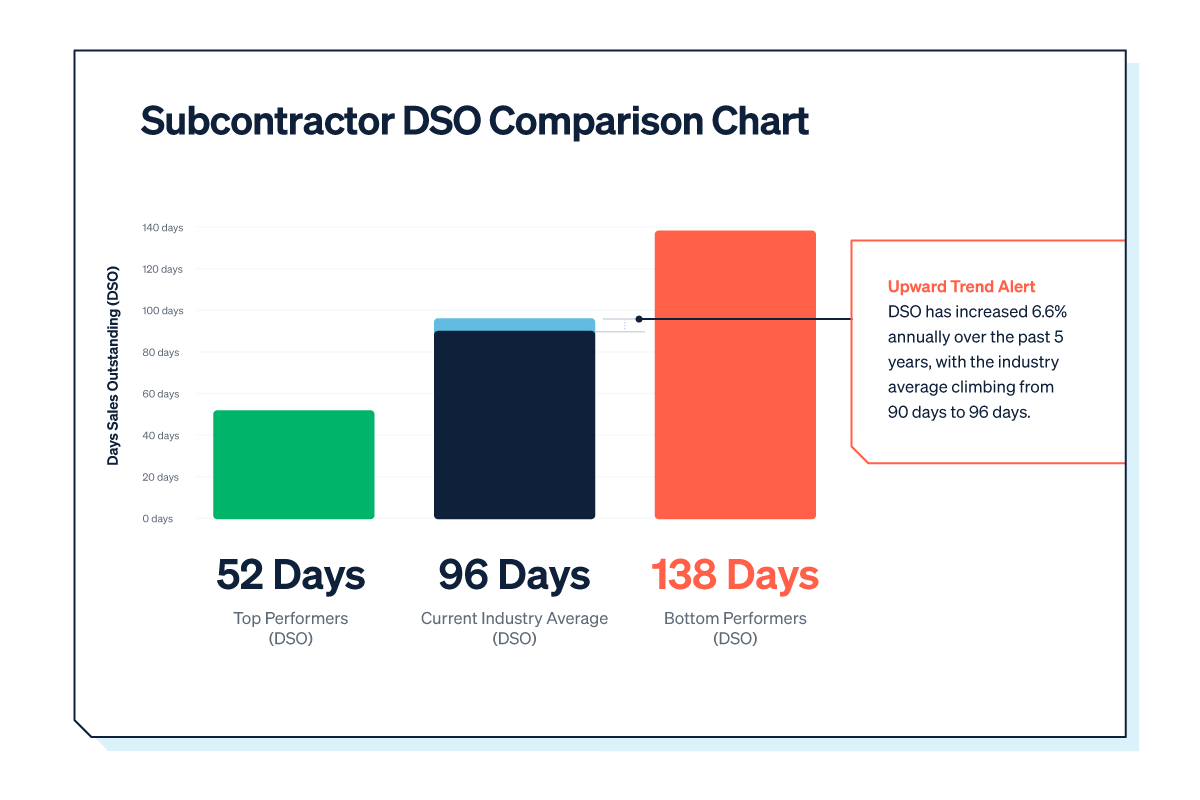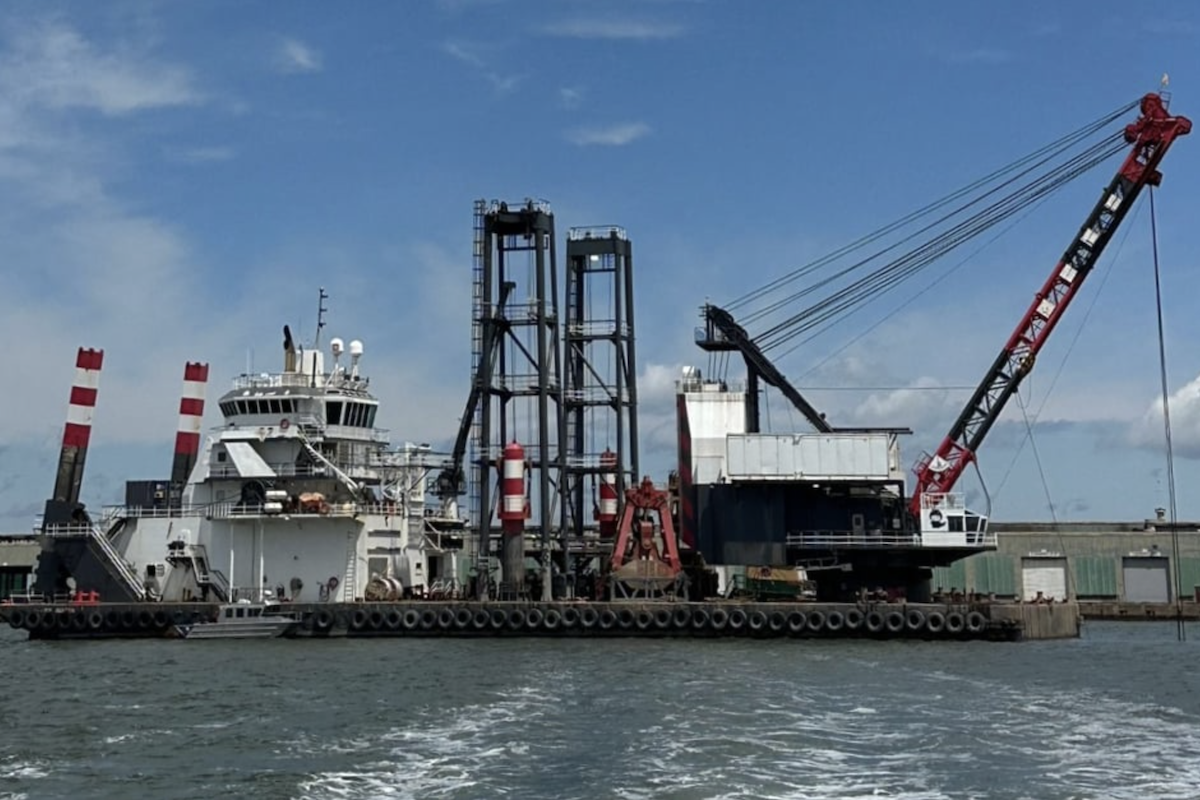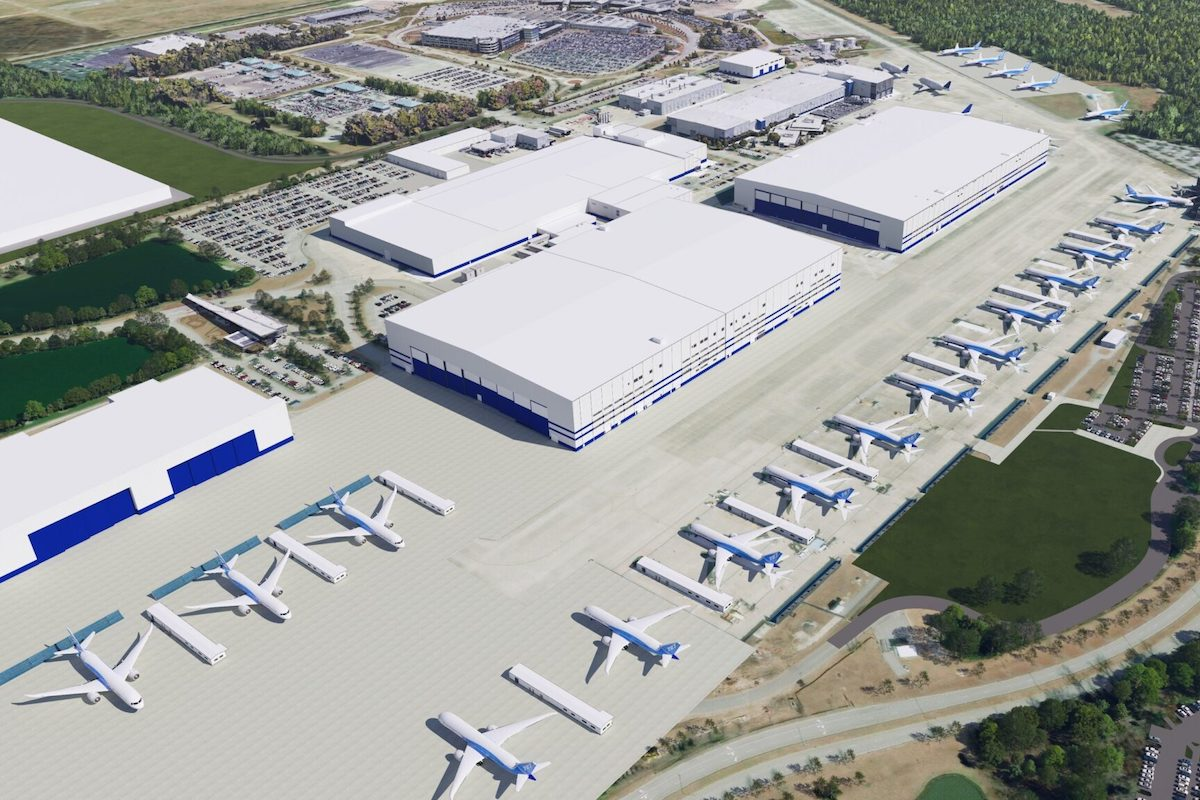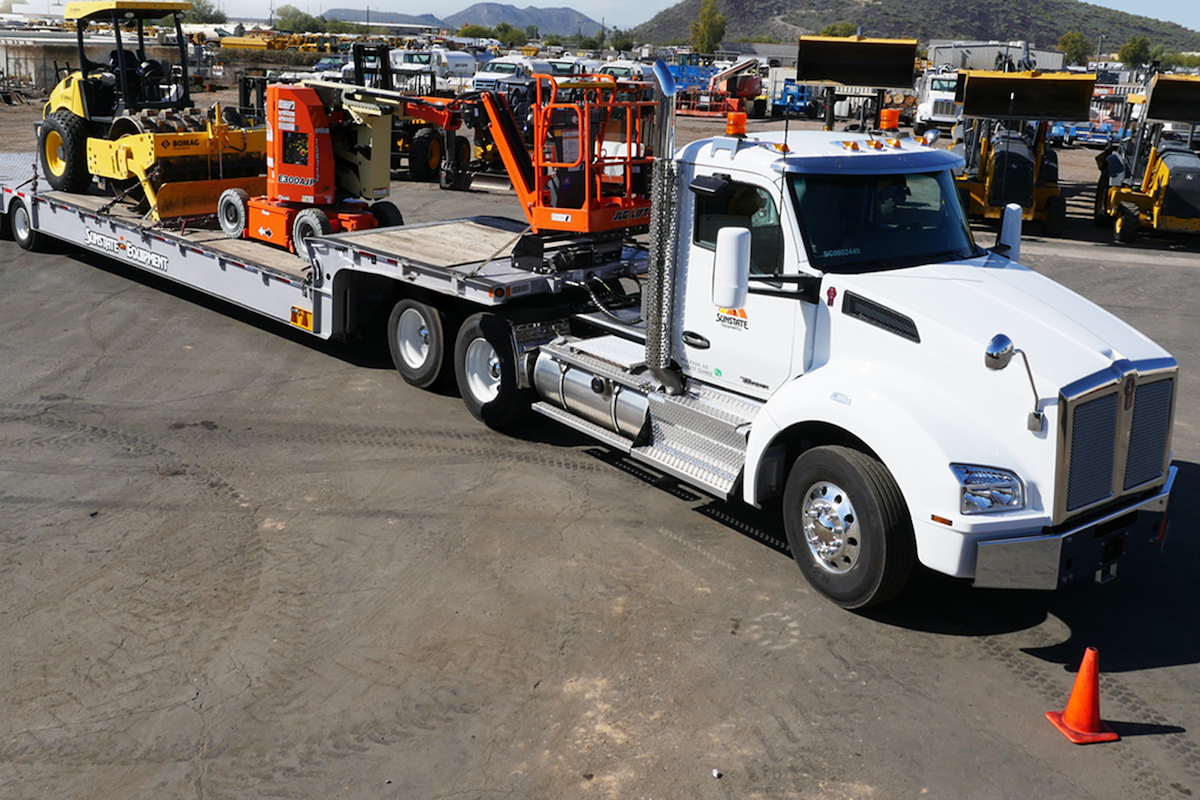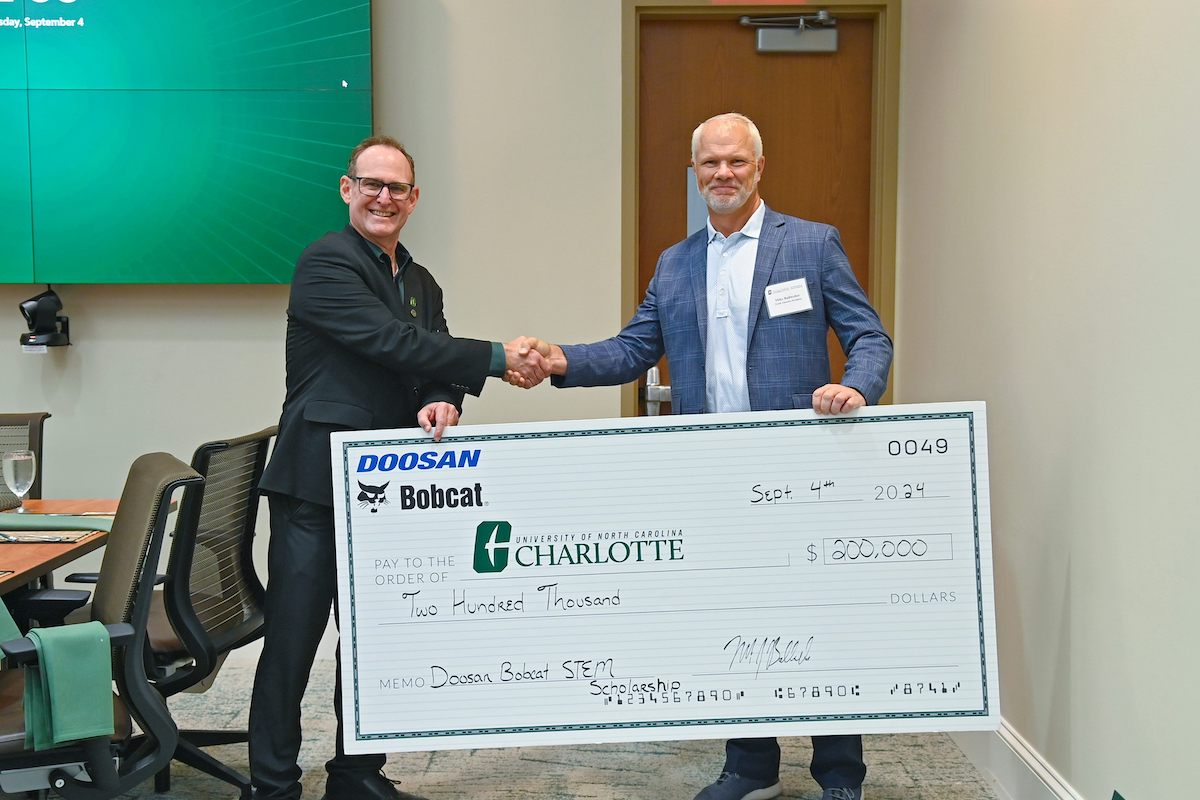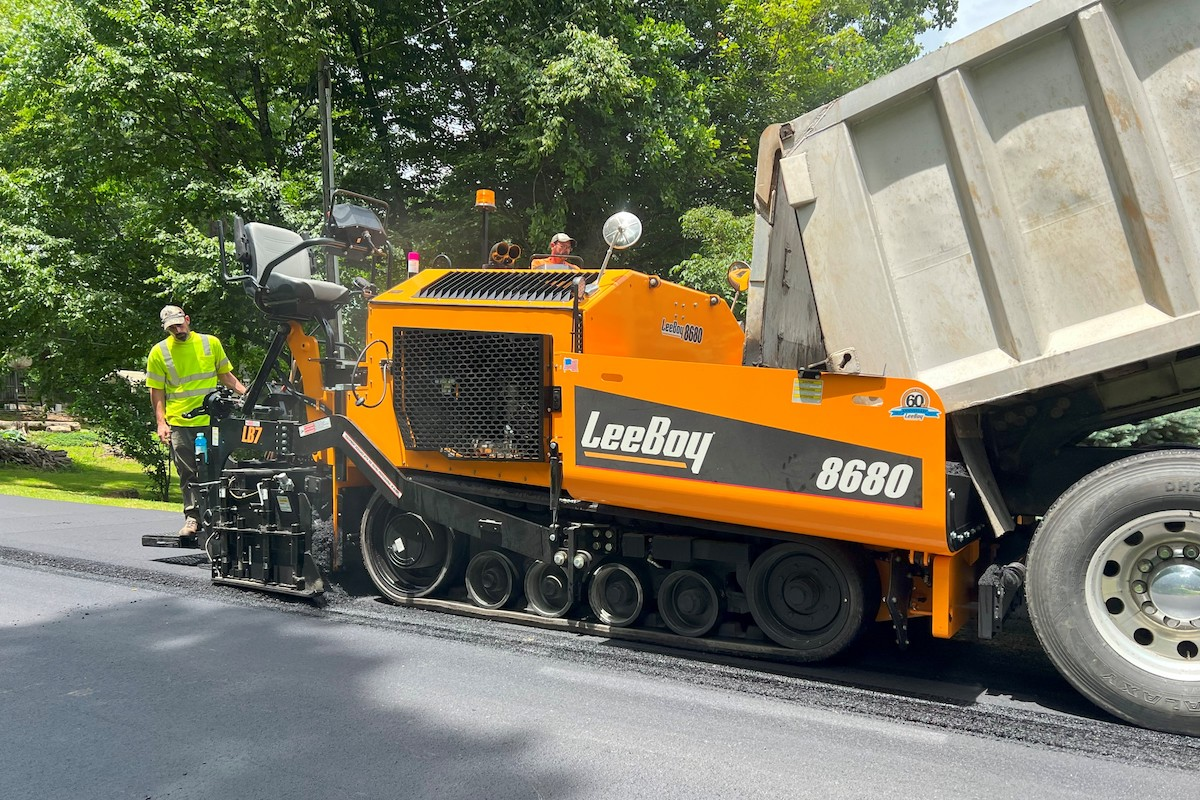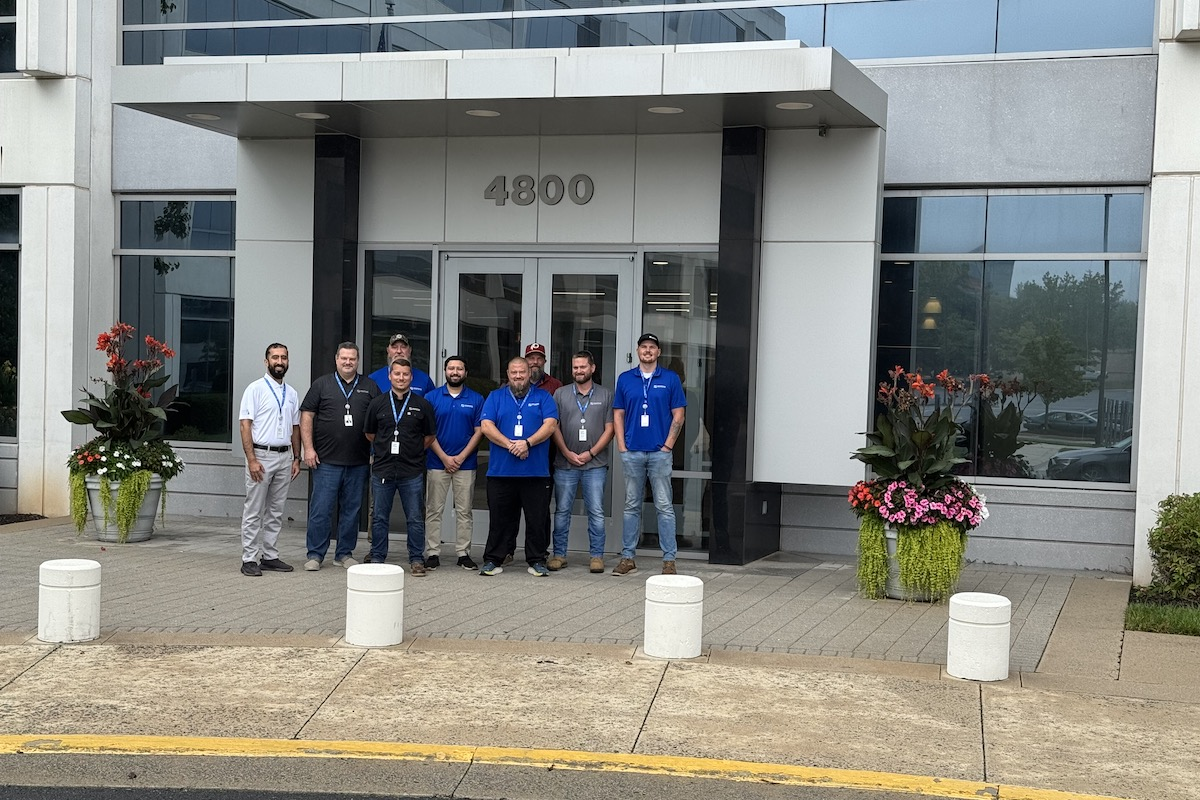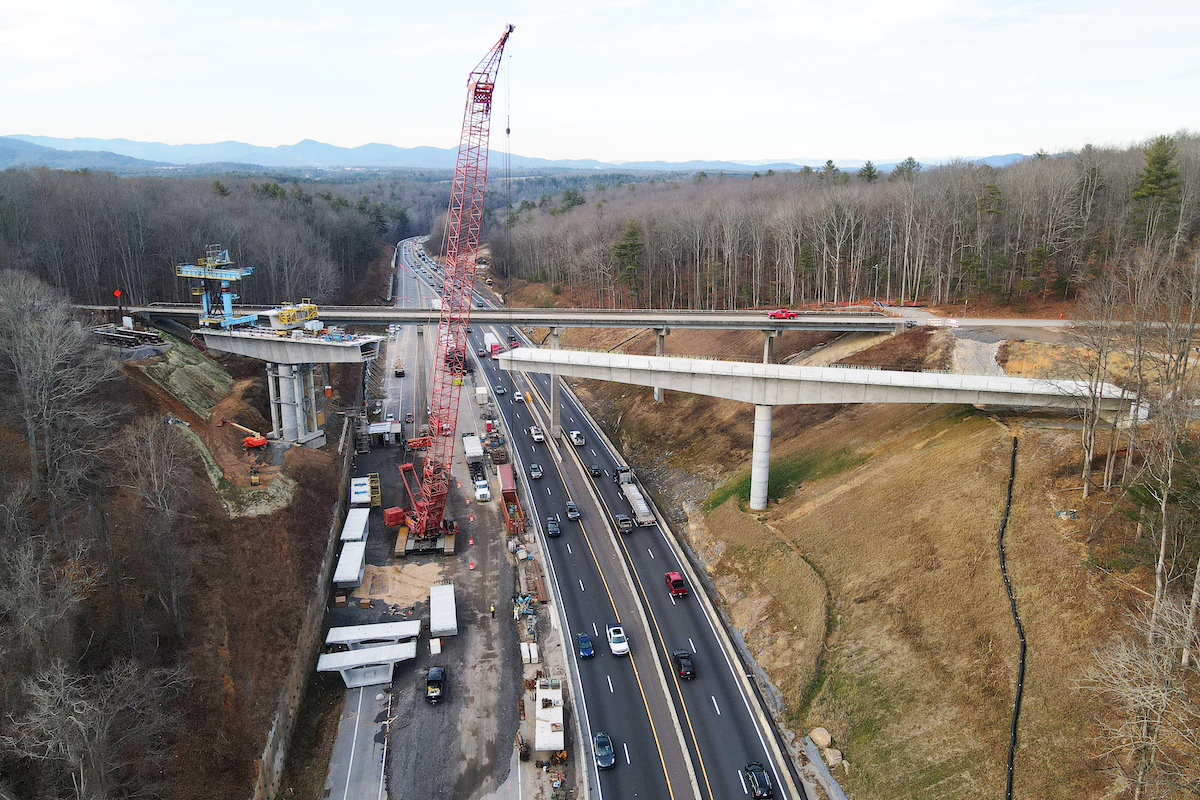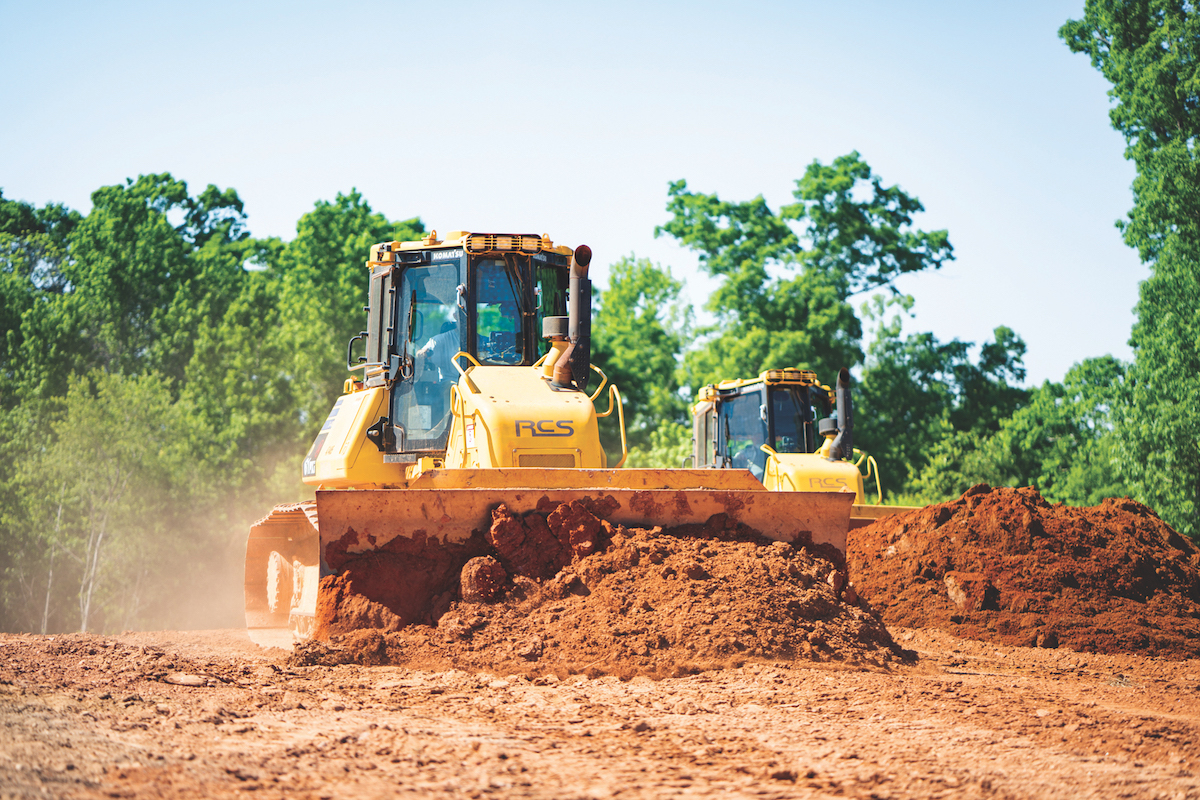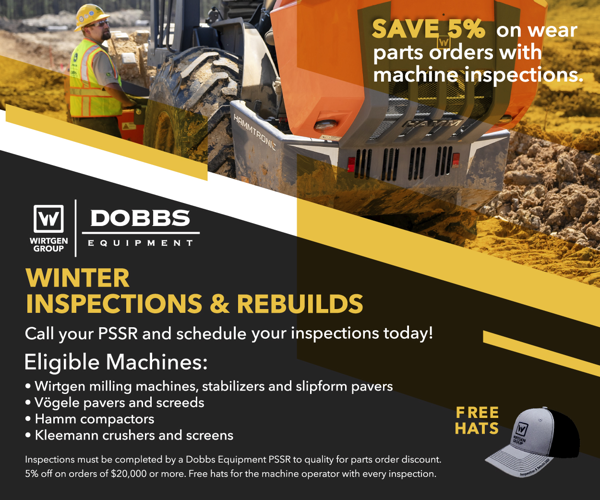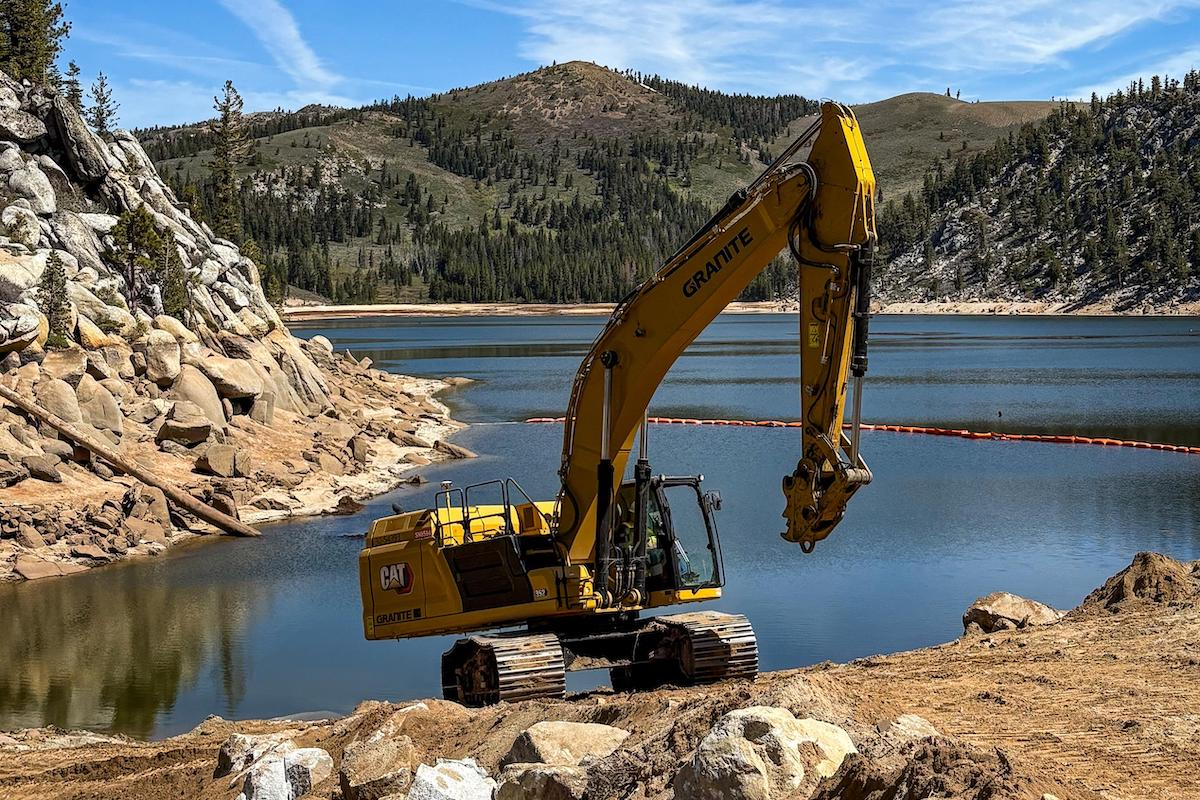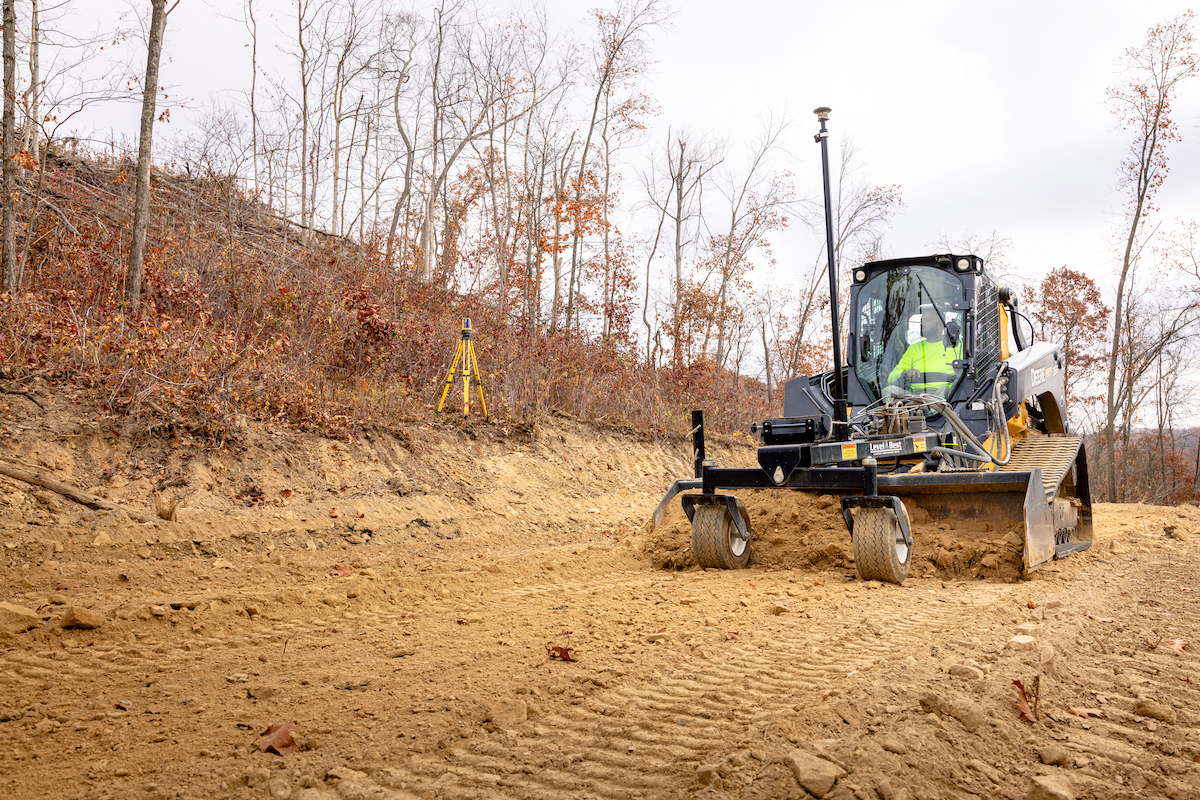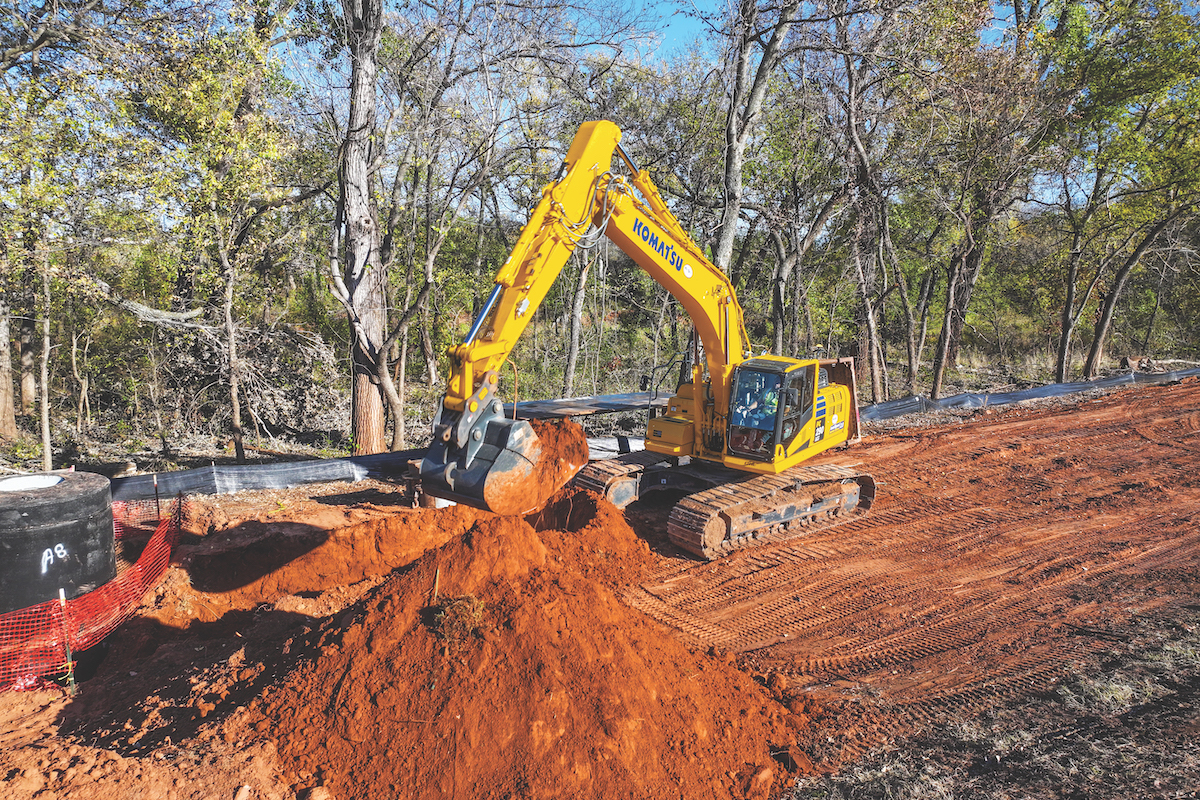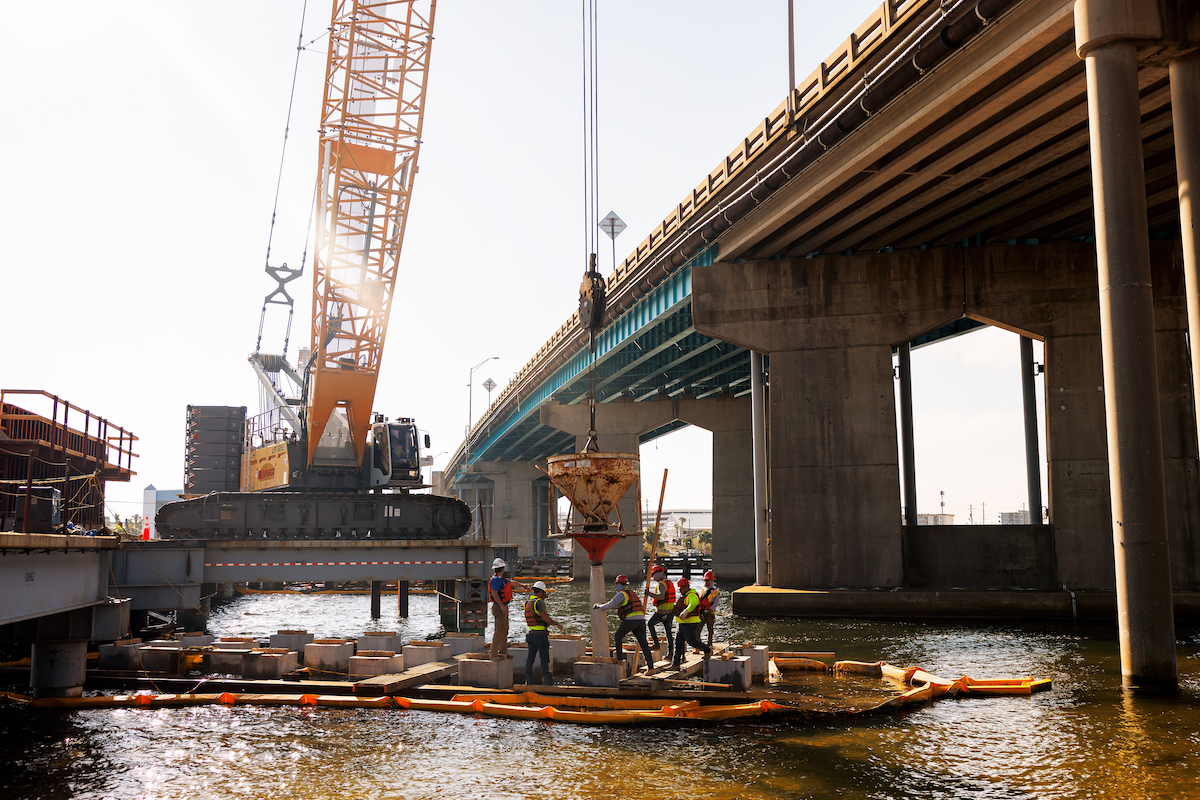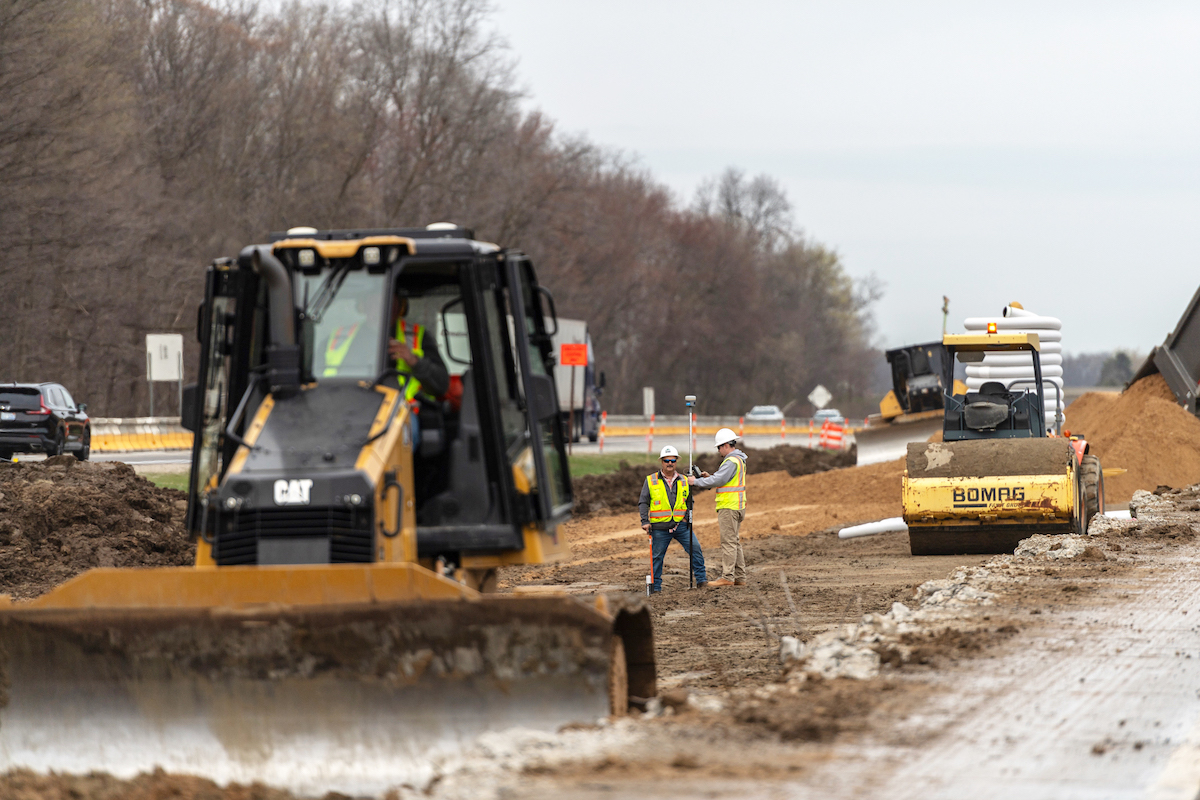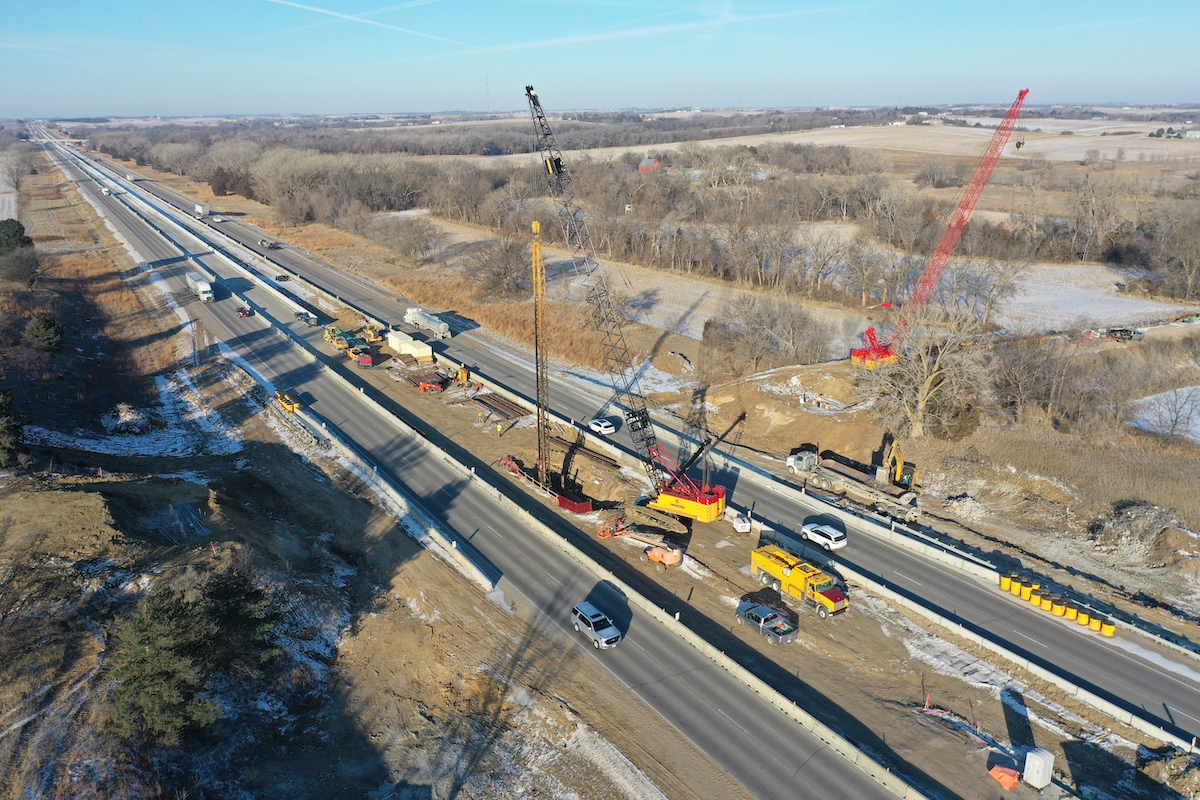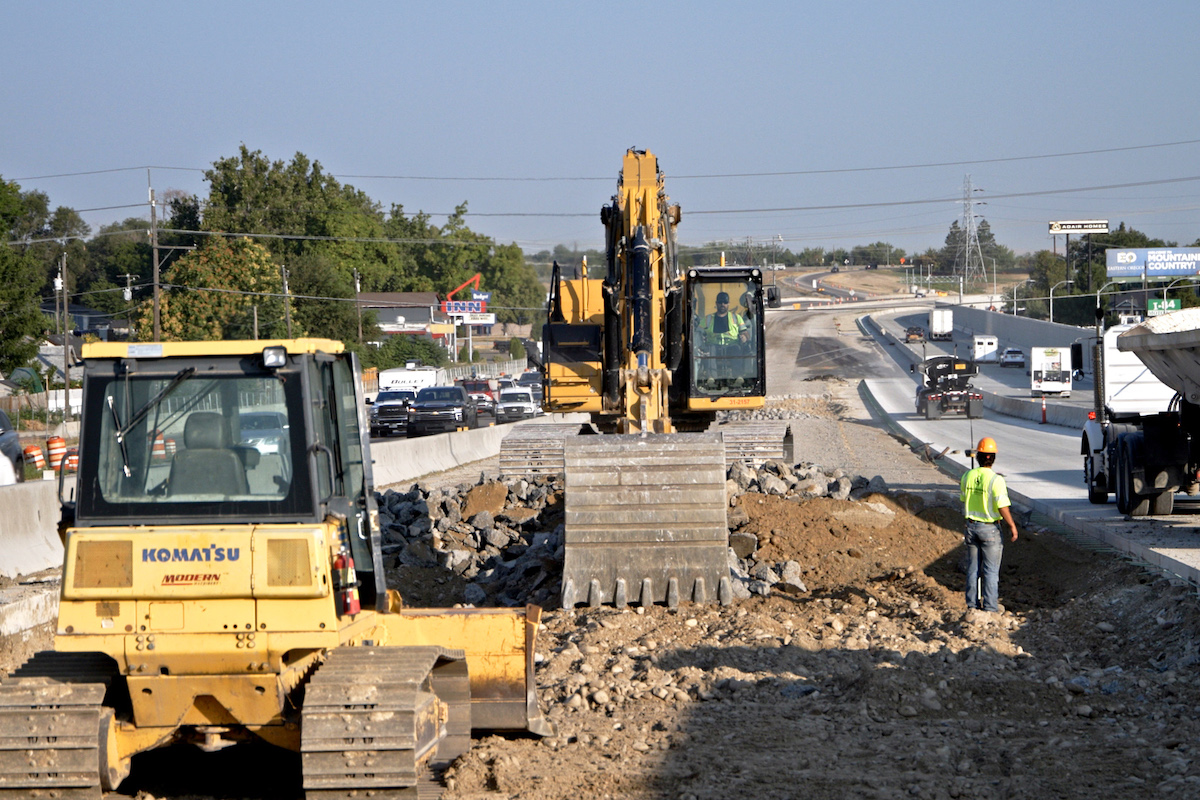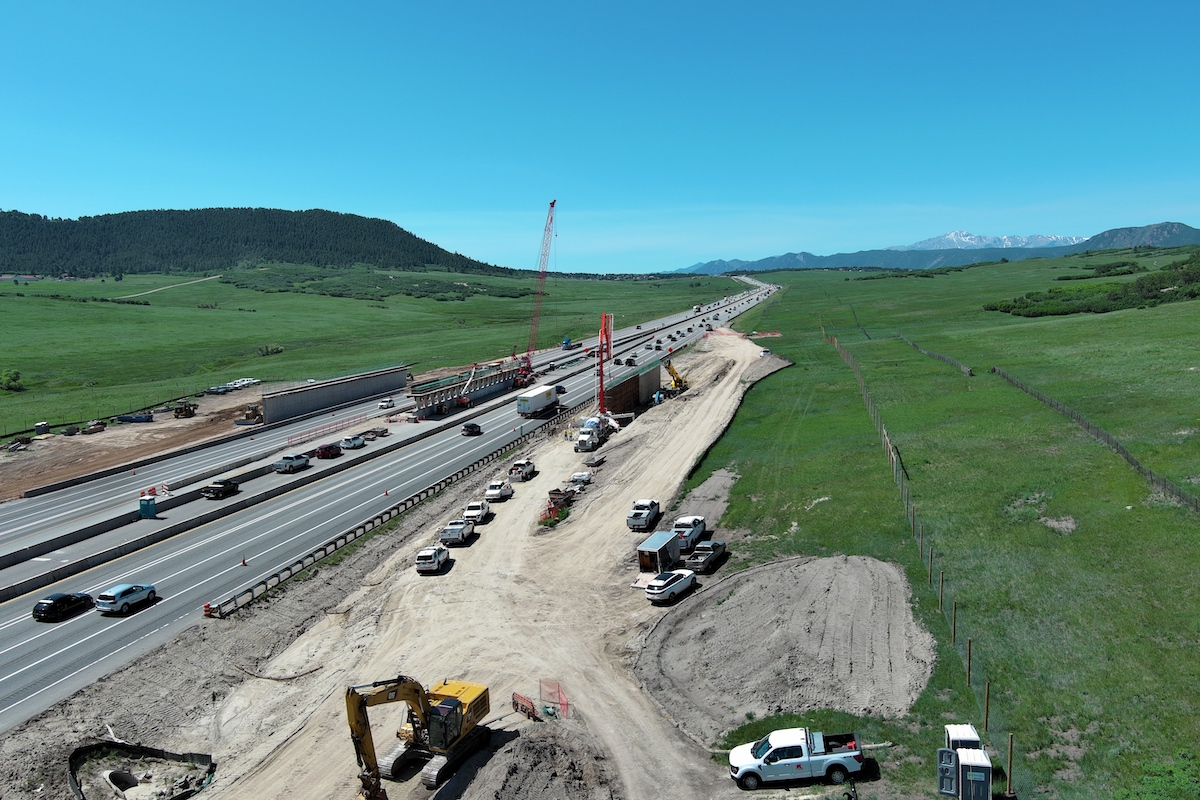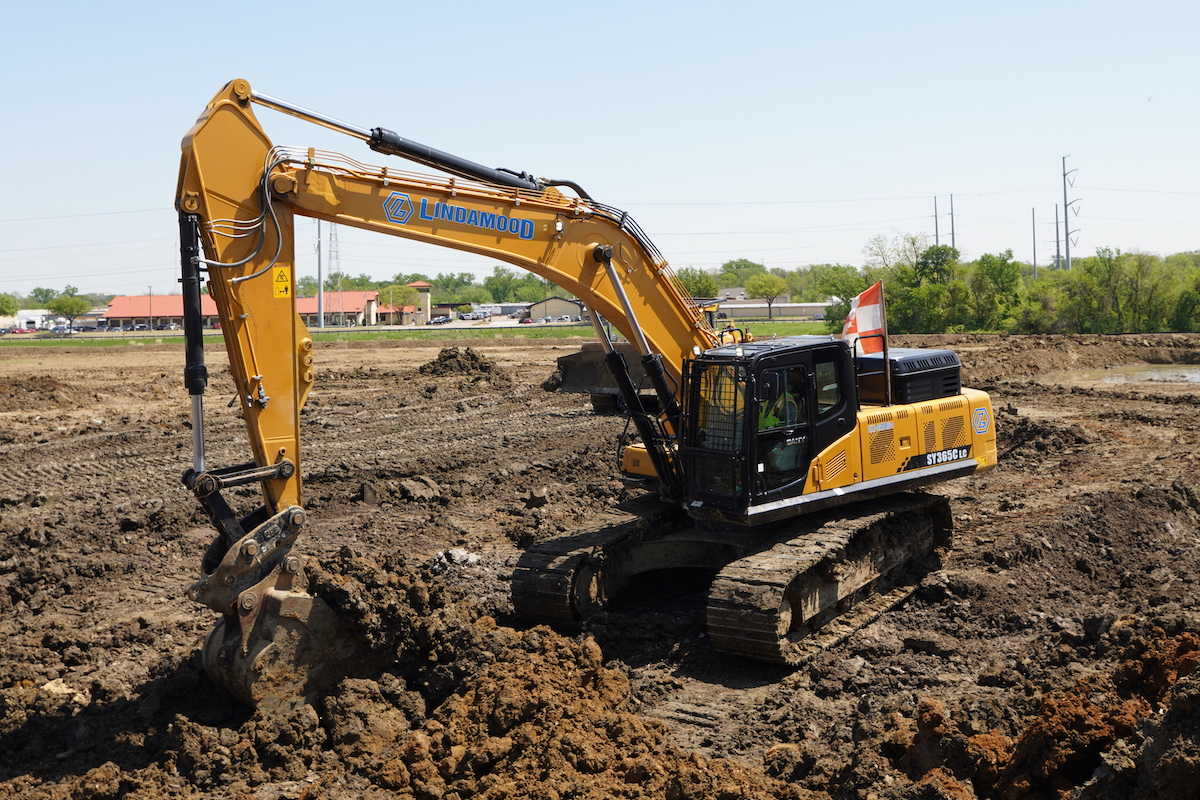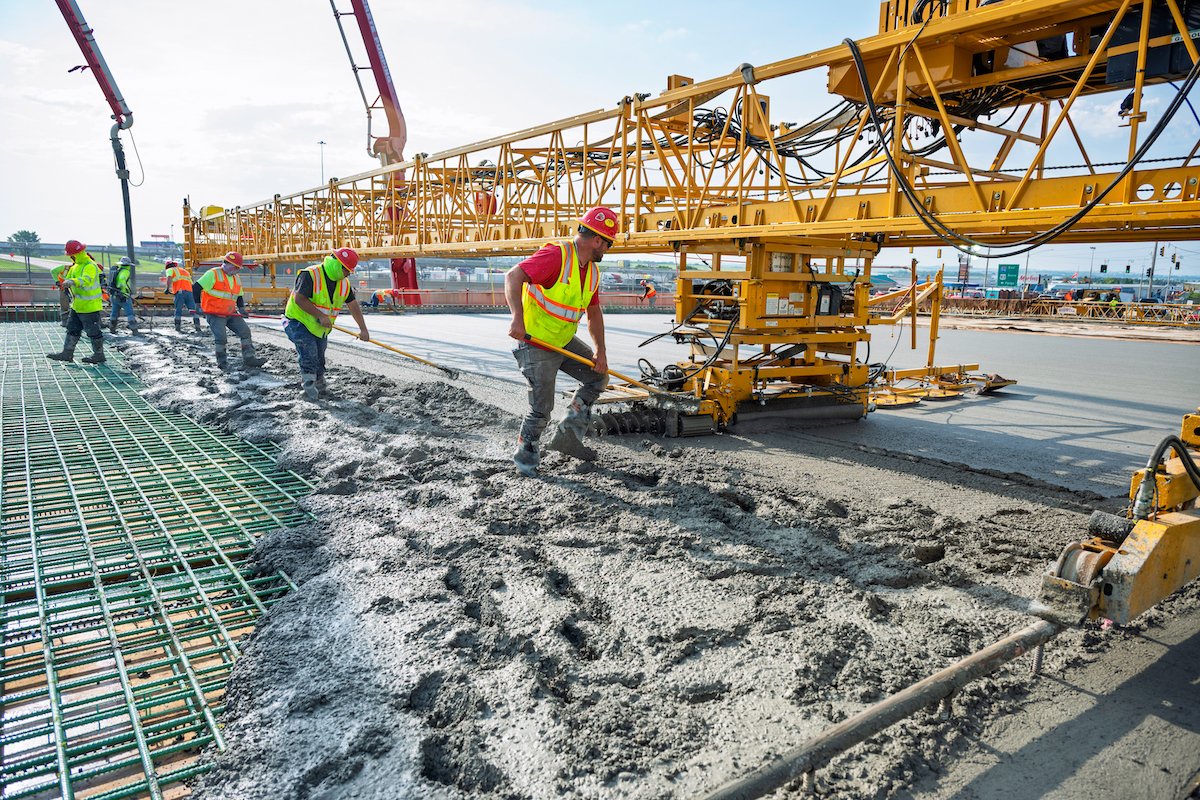Preventive maintenance is the backbone of any successful heavy equipment operation. Yet the wrong approach and equipment can reduce efficiency, increase costs, and strain labor resources. Onsite oil changes are one of the most significant opportunities to optimize a maintenance program. Popular mobile oil change equipment solutions include lube skids, trailers, vans, non-CDL lube trucks, and Class 7 and 8 fuel and lube trucks. Choosing the right equipment and labor approach can make a big difference.
Selecting the right oil change equipment requires balancing five critical factors:
- Technician availability
- Vehicle payload capacity
- Job site mobility
- Cost efficiency
- Weather protection
Who currently performs oil changes? Are dedicated lube technicians on site? Or are skilled mechanics being tasked with oil changes? The diesel mechanic’s skills are better spent elsewhere, while a dedicated lube tech can manage oil changes with minimal instruction.
Adding a dedicated lube technician can have transformative effects on fleet maintenance. First, it enhances schedule control, ensuring preventive maintenance tasks are completed on time without conflicts with other skilled labor responsibilities. Second, it allows more efficient use of high-cost mechanics by delegating routine fluid changes to trained, lower-cost technicians. As of April 2025, ZipRecruiter reported the average hourly rate for diesel mechanics was $28 compared to $17 for service/lube technicians. This represents a clear cost-saving opportunity.
In addition to wage differences, companies must consider the difficulty of finding technicians with a commercial driver’s license (CDL) required to operate Class 7 and Class 8 trucks. CDL-certified drivers are in short supply, and the competitive hiring landscape is fierce (and expensive). Non-CDL service trucks and service lube vans enable you to broaden the labor pool and assign maintenance tasks to employees without a CDL.

| Your local Komatsu America Corp dealer |
|---|
| Linder Industrial Machinery |
Start by calculating your daily onsite oil change needs. Reference OEM fluid change intervals and refill volumes to determine how much fresh and used oil a vehicle must carry to complete a day’s workload without returning to the shop. Then factor in any additional fluids, such as fuel, coolant, or diesel exhaust fluid (DEF).
Lube skids or lube trailers can be great solutions for lower-volume applications. Lightweight, portable, and easily transferred between vehicles, mobile lube skids maintain workflow even if a truck breaks down. Lube trailers offer a portable option for fleets that require additional fluid capacity without investing in a dedicated truck. Trailers can be hitched to multiple vehicles, freeing truck beds for other tasks.
Payload capacity, dictated by the vehicle’s gross vehicle weight rating (GVWR), directly affects the size and number of tanks your service vehicle can carry. Non-CDL trucks (under 26,000 pounds), typically Class 5 or 6, offer a balance of capacity, mobility, and ease of operation. They are particularly effective for crews not hauling fuel or DEF. Their smaller size improves maneuverability in congested urban environments and tight job site conditions.
Vans, while smaller and with lower fluid capacity, excel in fleet yards or projects with space constraints. They are ideal for light-duty and urban job site operations. Enclosed designs enhance technician comfort and efficiency, while side-door access and bulk fill stations simplify fluid transfers.

| Your local Topcon Positioning Systems Inc dealer |
|---|
| Linder Industrial Machinery |
Class 7 and Class 8 lube trucks support high-volume maintenance needs, including heavy-duty earthmoving machines that often remain on site until project completion. These lube trucks allow multiple machines to be serviced before returning to the shop, maximizing efficiency across large job sites. Class 7 trucks offer a balance of maneuverability and capacity for medium-sized fleets. Conversely, when you need maximum fluid capacity, turn to a Class 8 fuel and lube truck. It also provides the engine displacement to negotiate elevation changes and demanding terrain.
While larger Class 7 and 8 fuel and lube trucks can carry more fluids, they are not always the most economical choice for every operation. Non-CDL lube trucks and service lube vans typically provide lower total ownership costs, better fuel efficiency and reduced overhead for small and mid-sized fleets. Class 7 trucks strike a balance for larger fleets, while Class 8 trucks are a justifiable investment when servicing high-volume heavy equipment.
Smaller, non-CDL trucks and vans can reduce fuel consumption and maintenance expenses, particularly when long distances separate job sites. They also mitigate regulatory costs associated with large-vehicle operation, especially when crossing state lines. In some cases, deploying multiple non-CDL vehicles can prove more cost-effective than operating a single Class 8 truck.
Exposure to cold, heat, or dust can affect fluid transfer, increase technician fatigue, and reduce productivity. Enclosed service vans and non-CDL enclosed trucks mitigate these challenges, helping maintain oil flow and operator comfort. Features such as integrated shelving, side-door access, and LED fluid level monitors help streamline workflow and reduce physical strain.

| Your local Trimble Construction Division dealer |
|---|
| SITECH Mid-South |
Enclosed designs also provide an ideal canvas for branding and storage. For operations less concerned with weather exposure, open lube trucks offer easier component access and weight advantages.
In low temperatures, oil viscosity increases, slowing fluid transfer and making machines harder to start. Using heated tanks, immersion heaters, and heated grease probes can maintain fluid flow, reduce technician fatigue, and ensure your preventive maintenance schedules stay on track.
Closed-loop systems further minimize physical labor and exposure to hot oil, improving technician safety and productivity. Enclosed service vans, non-CDL enclosed trucks, and enclosed trailers all contribute to maintaining operational continuity in extreme weather conditions.
Evaluate your typical job sites, terrain, and fleet requirements when choosing between large trucks, non-CDL options, skids, or trailers. Smaller, more agile vehicles may outperform larger units in many onsite scenarios while offering cost savings and lower operating complexity.

| Your local Bomag Americas dealer |
|---|
| Linder Industrial Machinery |
For instance, service skids can be transported to the job site in the bed of a mechanic’s truck or large pickup and easily be placed where they are needed. Trailers are a good option on open job sites with relatively smooth terrain and can also be parked where needed, freeing up the truck.
Service vans are ideal for tight urban job sites, low-clearance bridges, and parking garages. Non-CDL trucks often feature four-wheel drive, higher ground clearance, and robust frames, enabling access to rough terrain. Larger Class 7 and 8 trucks are best suited for industrial or mining operations where capacity and endurance outweigh maneuverability concerns.
Investing in the right mobile oil change equipment ensures operational efficiency while protecting your most valuable assets: your technicians and equipment. With proper planning and the right tools, onsite oil changes become less of a burden and more of a competitive advantage.
Chance Castillo is Chief Sales and Marketing Officer for Sage Oil Vac, with over 12 years of experience helping companies become more efficient in preventive maintenance.

